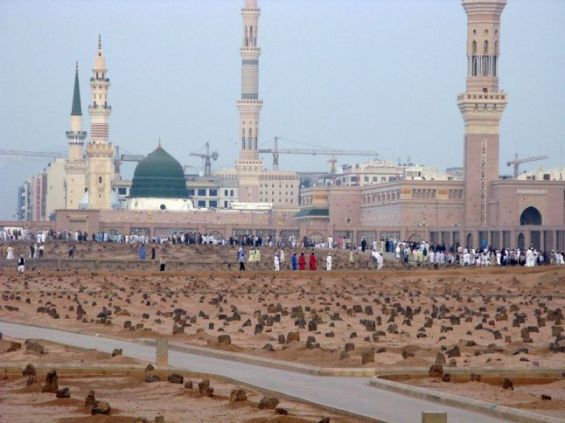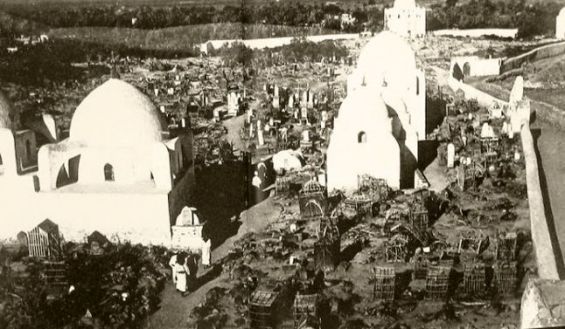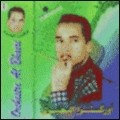It is the oldest cemetery in the history of Islam and the first one bordering the Prophet Muhammad’s mosque. Muslim pilgrims visiting al Hajj this year would have probably heard of Jannat Al-Baqui, a very important chapter of Islam.
The grounds of this holy land are the resting place of many Islamic figures, who rubbed shoulders with the Prophet. But this significant cemetery went through two major events. Domes and mausoleums decorating the cemetery’s tombs were razed twice.
Just like any other Islamic monuments and sites, Jannat Al-Baqi, which literally stands for «the garden of tree stumps», was cherished by the people of Al Madinah for the value it held. And the reason behind this significance is the legacy behind the cemetery's story.
Islam's most prominent figures
According to a paper entitled «The Destruction of Jannat al-Baqi : A Case of Wahhabi Iconoclasm» (Undergraduate Journal of Middle East Studies) by Adeel Mohammadi, Jannat Al-Baqi was «synonymous with Islamic piety» and «Muslims aspire to be buried in it if they die during the pilgrimage to the holy city of Madinah».

Many are the figures who are buried in this cemetery, including «Ibrahim (the infant son of the Prophet), Fatimah and Ruqayyah (daughters of the Prophet) Othman Ibn Affan (the third Caliph), Hassan ibn Ali, and Malik Ibn Anas (famous jurist and founder of the Maliki school of law)», the same source added.
Accounts suggest that the Prophet’s first companion Othman Ibn Madhoun, who died on the 3rd year after the Hijra, is also buried in Jannat Al-Baqi. The latter was not respected and well-regarded only by Muslims but also by the Prophet himself. According to the Muslim Vibe, it is believed that the Prophet would pass by the graveyard and «greet those buried» in it, saying : «Peace be upon you, O abode of the faithful! God willing, we should soon join you. O’ Allah, forgive the fellows of al-Baqi».
Tombs venerated by the Madinah's inhabitants
In addition to its holiness, the cemetery was often visited by the inhabitants of the Madinah, who used to stand by the tombs of the people buried there and recite Quran, hadith or just pray for their wishes to come true.
Quoting the account of a native Madanite called Muhammad Kibrit, mentioned in a book entitled «Kitab al-Jawahir al-Thaminah fi Mahasin al-Madinah (The Book of the Precious Jewels Concerning the Beauties of the City», Mohammadi wrote that Jannat Al-Baqi was the City’s «most famous landmark» and it had particular «practices associated to it».
«Kibrit recommens any person hoping to have his prayers answered to go on the 10th day of Dhu al-Hijjah, to the tomb of Ismail Ibn Jaafar Al-Sadiq, within the Baqi cemetery», he added. «There, he should pray (…) recite the Quranic chapters Fatiha and Ikhlas one hundred times each ; this should, according to Kibrit, ensure the granting of the prayer».

Accordingly, similar practices in the cemetery were common, rooted in the routine of the Madinah’s inhabitants at the time and were «passed from generation to generation». Here the scholar explains that the cemetery «had significance outside honoring the dead», stressing that «widespread belief held that specific prayers would also be answered of a supplicant visited the cemetery and carried certain rites».
Jannat Al-Baqi's destruction and Wahhabism
These practices were later criticized by the Wahhabi House, which led to the destruction of this holy site. According to the book «The Blessed Cities of Islam, Mecca-Medina» (Tughra Books, 2007) by Omer Faruk Aksoy, «the tombs and sacred sites in this cemetery were destroyed in 1806 after control of the city changed hands».
He recalled that the domes «were leveled and any structures over the Baqi cemetery were demolished». The same author reveals that after this first destruction, the tombs of Jannat Al-Baqi were «rebuilt» by Sultan Abdul hamid II, the 34th Sultan of the Ottoman Empire and the last Sultan to exert effective control over the fracturing state.

However, «following the end of the Ottoman services to the Haramayn, the Jannat Al-Baqi cemetery underwent a similar destruction», the same source concluded.
Indeed, by 1925 «forces loyal to the Wahhabi-Saudi alliance destroyed the domes, cupolas and mausoleums decorating the famous Madinite cemetery», wrote Mohammadi, explaining that the destruction is «naively understood as part of a natural Wahhabi proclivity towards violence and destruction (…) obsessed with an opposition to shirk (associationism) at all costs».
Now, the holy cemetery is an empty field near the second holiest mosque in the world. It is still remembered for its great significance for Muslims, who were pained by its destruction.





 chargement...
chargement...













